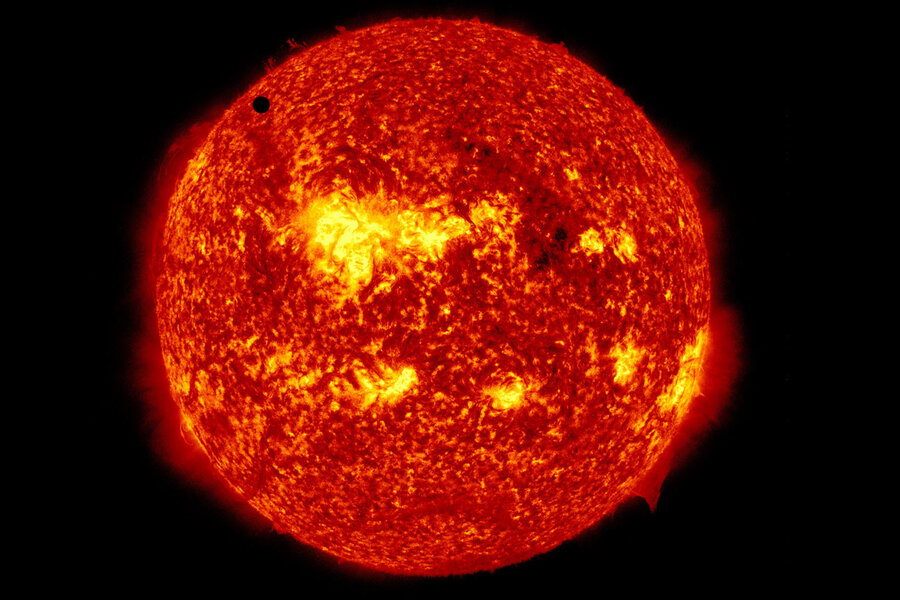Venus: Does this sunlight make me look fat?
Loading...
Maybe it’s time we saw Venus in a new light.
Venus, typically measured in the visible light spectrum, has long been known to have a radius of about 6,052 kilometers (3,761 miles). But new measurements by astrophysicist Fabio Reale and colleagues, taken through ultraviolet and X-ray light, tacked on a few dozen more miles. In a new study published Tuesday in Nature Communications, Dr. Reale suggests that the observed size of Venus changes in different wavelengths of light.
“Venus is not changing size with time,” explains Dr. Reale, who teaches physics and chemistry at the Universita di Palermo in Italy. “Its size changes when we measure it in different bands – when we use different ‘glasses,’ particularly in the ultraviolet and in the X-rays.”
A refresher for those who have forgotten their planetary mnemonic device: Venus is the second planet from the sun. Its orbit is slightly inclined compared to our own orbit, so when it passes between Earth and the Sun, it typically does not cross the Sun’s face. But every century or so, Venus goes into transit, passing visibly across the sun twice in an eight-year window, then taking another 100 years off. Bad news if you missed the last transit, in 2012; there won’t be another one until 2117.
Besides giving Earthlings a twice-in-a-lifetime view, transit provides a unique research opportunity for astronomers and astrophysicists. During Venus’s most recent transit, Reale and colleagues collected data from a pair of solar telescopes, Solar Dynamics Observatory and Hinode.
They found that their measurements of Venus changed depending on the type of light used to view the planet. Shorter wavelength light, like UV and X-ray, yielded a wider observed radius.
“The reason is that the solar high-energy radiation is stopped by Venus’s atmosphere at higher altitudes than the visible light,” Reale says. “So the planet looks larger at higher energies.”
Venus's thick atmosphere can crush metal in minutes, and this transit provided new insight into which gases are present at various distances above the surface. Mapping them out helps prepare for future Venus missions, Reale explains.
“We probed the upper atmosphere of Venus, the so-called ionosphere,” Reale says. “We now understand better how the upper atmosphere is stratified, and we can use this information to check models and to predict aerobraking of the missions that approach Venus.”
Reale’s research could also aid astronomers as they look beyond the reaches of our own solar system, at the so-called "exoplanets" orbiting distant stars.
“This is a breakthrough because it shows that the upper atmospheres of exoplanets can be potentially detected during transits,” Reale says. “It will represent a case-study for the detection of atmospheres in future observations of exoplanets.”







